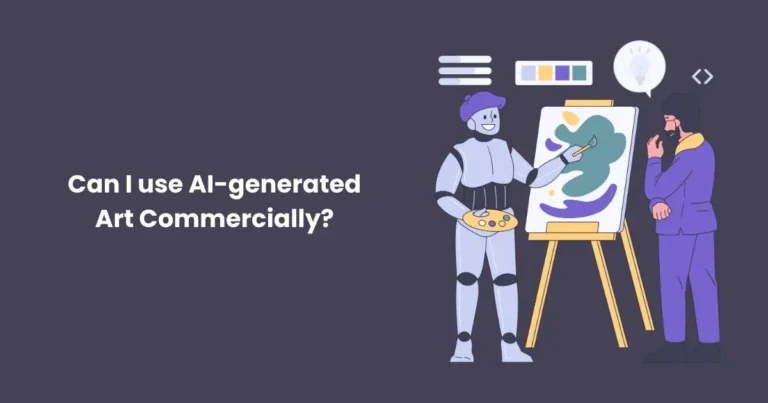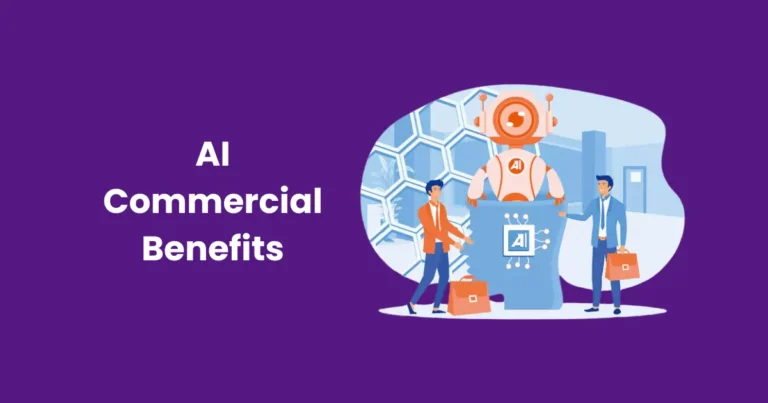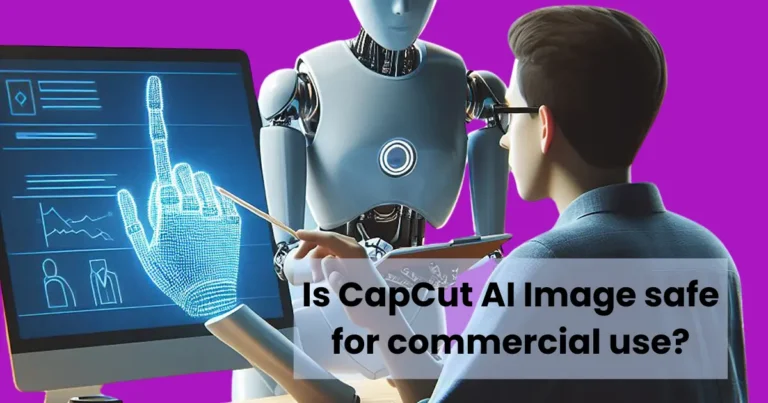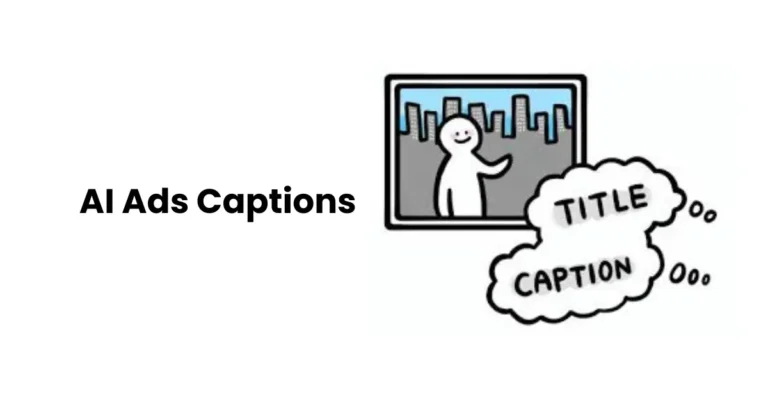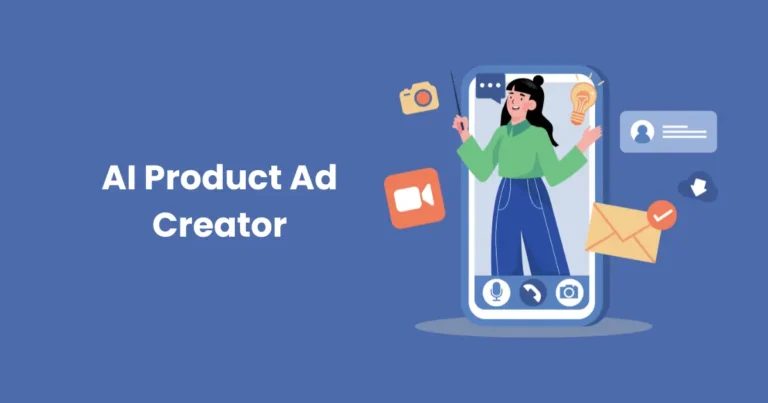AI Ads for Business | How AI Ads for Business Work
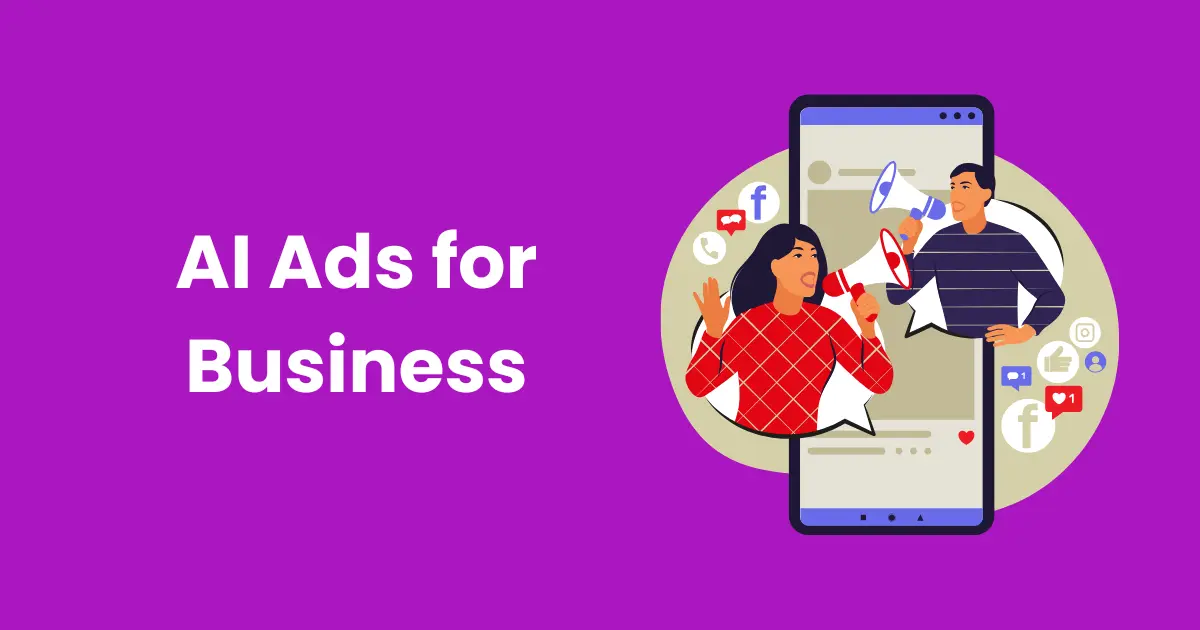
Contents
- 1 Why Choose AI Ads for Business?
- 2 How AI Ads Work for Business
- 3 Benefits of Using AI Ads for Business
- 4 Examples of AI Ads for Business
- 4.1 1. Personalized Product Recommendations (E-Commerce)
- 4.2 2. Dynamic Ad Creation (Social Media Ads)
- 4.3 3. Predictive Targeting (Search Engine Advertising)
- 4.4 4. AI-Powered Chatbot Ads (Customer Engagement)
- 4.5 5. Video Ad Optimization (Streaming Platforms)
- 4.6 6. Voice Search Ad Targeting (Smart Devices)
- 4.7 7. AI-Generated Banner Ads (Programmatic Advertising)
- 4.8 8. Sentiment Analysis for Ad Copy (Content Marketing)
- 4.9 9. Location-Based Advertising (Geotargeting)
- 4.10 10. Predictive Ad Performance (A/B Testing)
- 5 Tools and Platforms for AI Ads for Business
- 5.1 1. Google Ads
- 5.2 2. Facebook Ads Manager
- 5.3 3. AdRoll
- 5.4 4. Taboola
- 5.5 5. Hootsuite Ads
- 5.6 6. Adobe Advertising Cloud
- 5.7 7. Amazon Advertising
- 5.8 8. LinkedIn Marketing Solutions
- 5.9 9. Persado
- 5.10 10. Programmatic Advertising Platforms (e.g., The Trade Desk)
- 5.11 11. ChatGPT (OpenAI)
- 5.12 12. Canva with Magic Resize
- 6 Challenges and Limitations of AI Ads for Business
- 7 Future Trends in AI Ads for Business
- 7.1 1. Hyper-Personalization
- 7.2 2. Voice Search Advertising
- 7.3 3. Augmented Reality (AR) Ads
- 7.4 4. Real-Time Ad Optimization
- 7.5 5. Programmatic Advertising Evolution
- 7.6 6. Ethical AI Advertising
- 7.7 7. Emotional AI in Advertising
- 7.8 8. Multilingual and Cross-Cultural Targeting
- 7.9 9. AI-Powered Creative Tools
- 7.10 10. Predictive Consumer Trends
- 7.11 11. Conversational AI Ads
- 7.12 12. AI in Influencer Marketing
- 7.13 13. Zero-Click Advertising
- 7.14 14. Sustainable Advertising Practices
- 7.15 15. Integration with Blockchain
- 7.16 Conclusion
AI ads for business have become a game-changer in modern advertising, revolutionizing how companies connect with their target audiences. By utilizing advanced algorithms and data-driven insights, AI enables businesses to create highly personalized and efficient ad campaigns. In a competitive digital era, leveraging AI ads for business is essential to stay ahead, optimize marketing strategies, and achieve better ROI. These tools analyze consumer behavior, predict trends, and ensure that every ad is crafted to resonate with its intended audience, making them an indispensable asset for any business looking to grow.
Why Choose AI Ads for Business?
AI ads for business offer several unparalleled advantages that make them a powerful tool in the modern marketing landscape. By automating processes, enhancing precision, and delivering personalized experiences, AI-driven advertising has become a go-to solution for businesses of all sizes. Below are the key reasons to choose AI ads for business:
1. Cost-Efficiency and Scalability
AI ads for business help companies save money by automating tasks such as audience segmentation, bid adjustments, and performance tracking. This reduces the need for manual labor and allows campaigns to scale effortlessly as businesses grow.
2. Improved Targeting and Personalization
AI-powered systems analyze vast amounts of data, including browsing behavior, purchase history, and demographic details. This enables businesses to target specific audience segments with ads tailored to their interests, significantly increasing the likelihood of engagement and conversions.
3. Real-Time Analytics and Optimization
AI ads for business continuously monitor and analyze campaign performance, providing real-time feedback. This allows marketers to make instant adjustments to improve outcomes, ensuring that resources are used effectively.
4. Enhanced Customer Experience
Through personalization and relevance, AI ads for business create a seamless experience for customers. By delivering the right message at the right time, businesses can foster stronger relationships and loyalty with their audience.
5. Competitive Edge
Incorporating AI ads for business helps companies stay ahead of competitors. AI-driven campaigns are faster, smarter, and more adaptive, allowing businesses to respond swiftly to changing market dynamics.
By choosing AI ads for business, companies can achieve their marketing goals more efficiently while maintaining a competitive edge in an increasingly digital world.
How AI Ads Work for Business
AI ads for business operate by leveraging advanced algorithms, machine learning, and vast data sets to create, manage, and optimize advertising campaigns. These systems automate processes that traditionally required significant manual effort, ensuring more precise targeting and improved efficiency. Here’s a breakdown of how AI ads for business function:

1. Data Collection and Analysis
AI systems begin by gathering data from various sources, such as:
- User interactions on websites and apps
- Social media activity and preferences
- Demographic and geographic details
- Purchase history and browsing behavior
This data is then analyzed to uncover patterns, trends, and insights about consumer preferences, enabling businesses to build accurate audience profiles.
2. Algorithm-Driven Ad Creation
AI uses machine learning to generate ad content tailored to specific audience segments. This involves:
- Crafting personalized headlines and copy
- Selecting visuals that resonate with the audience
- Adjusting the tone and messaging based on user preferences
For example, AI can automatically create different versions of an ad to test what works best for different demographics.
3. Predictive Insights for Campaign Success
AI predicts the potential performance of ad campaigns by analyzing historical data and market trends. It provides recommendations such as:
- Optimal ad placement
- Best times to run ads
- Budget allocation for maximum ROI
These predictive insights ensure that businesses make data-driven decisions.
4. Automated Ad Optimization
AI ads for business continuously monitor campaign performance and make adjustments in real-time. This includes:
- Modifying bidding strategies based on engagement
- Refining targeting parameters to improve reach
- Testing and optimizing ad variations
This automation eliminates the need for constant manual intervention, saving time and resources.
5. Feedback Loop for Continuous Improvement
AI systems learn from each campaign, improving their algorithms over time. This ensures that future campaigns are even more effective, as the AI becomes better at predicting customer behavior and crafting successful ads.
By understanding how AI ads for business work, companies can see the value in adopting this innovative technology. AI not only simplifies advertising processes but also enhances precision, making it an indispensable tool for achieving marketing success.
Benefits of Using AI Ads for Business
AI ads for business offer transformative advantages, helping companies streamline their advertising efforts, optimize results, and achieve better engagement. By leveraging artificial intelligence, businesses can make data-driven decisions, increase efficiency, and create more impactful campaigns. Here are the key benefits of using AI ads for business:

1. Enhanced ROI (Return on Investment)
AI ads for business ensure optimal use of advertising budgets by identifying high-performing strategies and focusing resources where they yield the greatest returns. By targeting the right audience with precision and tailoring ads to their preferences, businesses see improved conversion rates and better ROI.
2. Streamlined Ad Management
With AI automating tasks like audience segmentation, bid adjustments, and performance tracking, businesses save valuable time and reduce the complexity of managing campaigns. This allows marketers to focus on creative strategy and overall campaign goals.
3. Greater Engagement Rates
AI ads for business deliver highly personalized content that resonates with individual users. By analyzing user behavior and preferences, AI creates ads that are more likely to capture attention and encourage interaction, resulting in higher click-through and engagement rates.
4. Real-Time Optimization
AI continuously monitors ad performance and makes instant adjustments to improve outcomes. Whether it’s refining targeting, reallocating budgets, or testing ad variations, real-time optimization ensures campaigns remain effective throughout their duration.
5. Cost-Effective Scalability
AI ads for business allow companies to scale their campaigns effortlessly without significant increases in costs. Automation reduces the need for additional manpower, making it easier to expand advertising efforts as a business grows.
6. Improved Customer Insights
By analyzing large datasets, AI uncovers valuable insights into customer preferences, behaviors, and trends. This information helps businesses refine their marketing strategies and build stronger, more meaningful connections with their audience.
7. Consistent Performance Across Platforms
AI ensures consistency in ad performance across multiple platforms, such as social media, search engines, and display networks. This unified approach enhances brand visibility and maximizes the impact of advertising efforts.
By using AI ads for business, companies can unlock new levels of efficiency, precision, and creativity. These benefits make AI-driven advertising an essential tool for businesses seeking to thrive in the fast-paced, data-driven world of digital marketing.
Examples of AI Ads for Business
AI ads for business are utilized across various industries and platforms, showcasing their versatility and effectiveness in reaching diverse audiences. These examples highlight how companies leverage AI to create impactful advertising campaigns:

1. Personalized Product Recommendations (E-Commerce)
Platforms like Amazon and Shopify use AI to analyze user browsing history, purchase behavior, and preferences. AI generates personalized product recommendations that are displayed in ads, emails, or on-site banners, encouraging users to make purchases.
2. Dynamic Ad Creation (Social Media Ads)
Facebook and Instagram utilize AI to automate ad creation and optimization. Tools like Facebook Ads Manager analyze audience data to adjust ad placements, formats, and content, ensuring maximum engagement for businesses.
3. Predictive Targeting (Search Engine Advertising)
Google Ads employs AI to identify the most relevant keywords and predict user intent. By optimizing bids and targeting parameters, AI ensures ads appear to users most likely to convert, increasing the efficiency of campaigns.
4. AI-Powered Chatbot Ads (Customer Engagement)
Brands like Sephora and H&M use AI chatbots integrated into social media ads to engage users in real-time. These chatbots provide personalized responses, product suggestions, and direct links to purchase pages, creating a seamless shopping experience.
5. Video Ad Optimization (Streaming Platforms)
AI-powered platforms like YouTube Ads analyze viewer behavior to display relevant video ads. For example, AI determines when and where to insert skippable or non-skippable ads to maximize viewer retention and brand impact.
6. Voice Search Ad Targeting (Smart Devices)
AI enables businesses to target ads to users interacting with smart devices like Amazon Echo or Google Home. For instance, a user asking for local restaurant recommendations might hear an AI-curated ad for a nearby eatery.
7. AI-Generated Banner Ads (Programmatic Advertising)
Companies like Google and Adobe use AI to design visually appealing banner ads automatically. These ads are tailored to the preferences of different audience segments, improving click-through rates and brand recall.
8. Sentiment Analysis for Ad Copy (Content Marketing)
AI tools like Grammarly and Copy.ai assist in crafting ad copy that resonates emotionally with audiences. By analyzing sentiment in real-time, businesses can ensure their messaging aligns with their target audience’s preferences.
9. Location-Based Advertising (Geotargeting)
Retail businesses use AI-powered geotargeting to deliver ads to users near their physical stores. For example, Starbucks sends location-specific promotions via mobile ads to attract customers to nearby outlets.
10. Predictive Ad Performance (A/B Testing)
AI tools like Optimizely use predictive analytics to test multiple versions of an ad campaign. Businesses can quickly determine which version performs best and scale it for maximum impact.
By leveraging AI ads for business, companies across industries achieve better targeting, personalization, and engagement, making their marketing strategies more effective and impactful.
Tools and Platforms for AI Ads for Business
AI ads for business rely on cutting-edge tools and platforms to optimize campaigns, personalize content, and maximize engagement. Below are some of the most popular tools and platforms used for creating and managing AI-driven advertisements:

1. Google Ads
Google Ads uses AI to optimize search and display ads by analyzing user behavior, intent, and demographics.
- Features: Smart bidding, dynamic ad creation, and keyword targeting.
- Best For: Search engine advertising and reaching intent-driven audiences.
2. Facebook Ads Manager
Facebook’s AI algorithms help businesses create personalized social media ads by analyzing user interactions, interests, and preferences.
- Features: Audience segmentation, dynamic creative optimization, and real-time analytics.
- Best For: Social media marketing on Facebook and Instagram.
3. AdRoll
AdRoll is an AI-powered platform specializing in retargeting and multi-channel campaigns.
- Features: Predictive analytics, automated ad optimization, and cross-platform support.
- Best For: Retargeting campaigns and customer acquisition.
4. Taboola
Taboola is an AI-driven content discovery platform that places native ads on high-traffic websites.
- Features: Predictive targeting, content recommendations, and campaign optimization.
- Best For: Native advertising and increasing brand visibility.
5. Hootsuite Ads
Hootsuite integrates AI tools for managing social media ads across platforms like Facebook, Instagram, and LinkedIn.
- Features: Automated ad scheduling, performance tracking, and audience insights.
- Best For: Social media advertising and campaign management.
6. Adobe Advertising Cloud
Adobe’s AI-powered advertising platform provides end-to-end campaign management.
- Features: Predictive targeting, AI-driven ad creation, and advanced analytics.
- Best For: Multi-channel advertising across display, video, and social media.
7. Amazon Advertising
Amazon’s AI tools help sellers create personalized ads based on shopper behavior and purchasing patterns.
- Features: Product display ads, sponsored product recommendations, and detailed analytics.
- Best For: E-commerce advertising and product promotion.
8. LinkedIn Marketing Solutions
LinkedIn’s AI capabilities optimize B2B ad campaigns by targeting professionals based on their roles and industries.
- Features: Audience targeting, lead generation, and ad performance insights.
- Best For: B2B marketing and professional networking ads.
9. Persado
Persado uses AI to generate emotionally engaging ad copy that resonates with audiences.
- Features: AI-powered copy generation, sentiment analysis, and campaign optimization.
- Best For: Ad creatives and email marketing campaigns.
10. Programmatic Advertising Platforms (e.g., The Trade Desk)
Programmatic platforms use AI to automate the buying and placement of ads in real-time.
- Features: Audience targeting, real-time bidding, and campaign management.
- Best For: Display ads and video ads across multiple channels.
11. ChatGPT (OpenAI)
ChatGPT assists in generating ad copy, brainstorming creative ideas, and answering customer queries through AI chatbots.
- Features: Natural language processing, customizable responses, and content generation.
- Best For: Crafting engaging ad copy and improving customer interaction.
12. Canva with Magic Resize
Canva incorporates AI tools to design visually appealing ads that fit different platforms.
- Features: Automated resizing, template recommendations, and AI-assisted design suggestions.
- Best For: Quick and visually appealing ad creation.
By using these tools and platforms, businesses can harness the power of AI ads for business to improve targeting, streamline workflows, and achieve better campaign results across various advertising channels.
Challenges and Limitations of AI Ads for Business
While AI ads for business offer significant advantages, they also come with certain challenges and limitations. Understanding these hurdles helps businesses prepare for and address them effectively, ensuring better outcomes from AI-driven advertising.

1. Data Privacy Concerns
AI ads for business rely heavily on user data for personalization and targeting. However, growing concerns about data privacy and strict regulations, such as GDPR and CCPA, can limit data availability.
- Challenge: Balancing personalization with compliance to avoid legal issues.
- Solution: Use anonymized data and ensure transparency with users about data usage.
2. Dependence on Quality Data
The effectiveness of AI ads depends on the quality and accuracy of the data used. Incomplete, outdated, or biased data can lead to poor targeting and ineffective campaigns.
- Challenge: Ensuring data accuracy and relevance.
- Solution: Regularly clean and update data sources to maintain campaign performance.
3. Limited Human Creativity
AI excels at data analysis but may struggle with producing creative, emotionally resonant ads that connect deeply with audiences.
- Challenge: Combining AI efficiency with human creativity.
- Solution: Use AI for optimization and rely on creative professionals for emotional appeal.
4. High Initial Costs
Implementing AI-driven advertising platforms often requires significant upfront investment, including training, software, and hardware expenses.
- Challenge: Justifying the cost for small and medium-sized businesses.
- Solution: Start with scalable AI tools and platforms that fit the budget, then expand as ROI improves.
5. Lack of Transparency in AI Decisions
AI algorithms operate as black boxes, making it challenging to understand how certain decisions—such as targeting parameters—are made.
- Challenge: Explaining AI decisions to stakeholders or clients.
- Solution: Use platforms that offer detailed insights into AI processes and decision-making.
6. Over-Reliance on Automation
AI can automate many aspects of advertising, but over-reliance on automation may lead to overlooking nuanced customer needs or emerging trends.
- Challenge: Losing the human touch in campaigns.
- Solution: Regularly monitor AI campaigns and incorporate human oversight for strategic adjustments.
7. Algorithm Bias
AI systems can inherit biases from the data they are trained on, resulting in unfair targeting or exclusion of specific demographic groups.
- Challenge: Avoiding discriminatory practices in advertising.
- Solution: Audit AI models for bias and ensure diverse data representation during training.
8. Ad Fatigue
AI’s ability to optimize campaigns can sometimes result in overexposure to the same audience, leading to ad fatigue.
- Challenge: Keeping audiences engaged without overloading them.
- Solution: Rotate ad creatives and use frequency capping to manage exposure levels.
9. Rapid Technology Evolution
AI technology evolves quickly, and businesses may find it difficult to keep up with new advancements and updates.
- Challenge: Staying updated with the latest AI trends and tools.
- Solution: Invest in ongoing training and work with AI-savvy marketing agencies.
10. Ethical Concerns
AI ads for business can sometimes create ethical dilemmas, such as manipulative targeting or exploiting user vulnerabilities.
- Challenge: Maintaining ethical advertising practices.
- Solution: Establish clear ethical guidelines and monitor campaigns for compliance.
While challenges exist, businesses can overcome these limitations by combining AI’s capabilities with human expertise and strategic planning. By addressing these obstacles, AI ads for business can continue to drive impactful and ethical advertising campaigns.
Future Trends in AI Ads for Business
The landscape of AI ads for business is rapidly evolving, driven by advancements in artificial intelligence, machine learning, and data analytics. As businesses strive to create more impactful campaigns, several trends are shaping the future of AI-driven advertising.

1. Hyper-Personalization
Future AI ads will move beyond basic targeting to deliver hyper-personalized content tailored to individual preferences, behaviors, and real-time contexts.
- Example: AI will craft unique ad experiences, such as personalized video ads that address users by name or recommend products based on live data.
2. Voice Search Advertising
With the rise of voice-activated devices like Amazon Alexa, Google Home, and Siri, AI will enable businesses to optimize ads for voice search queries.
- Future Impact: AI will predict voice-based user intent and deliver conversational ads designed for smart devices.
3. Augmented Reality (AR) Ads
AI will power AR ads, allowing users to interact with products virtually. For instance, users can “try on” clothes or visualize furniture in their homes using AR-powered advertising.
- Example: AI will refine AR experiences by tailoring them to user preferences, making ads more engaging and immersive.
4. Real-Time Ad Optimization
AI will enhance real-time ad optimization, allowing businesses to adjust campaigns instantly based on audience feedback, market trends, and performance metrics.
- Example: AI will automatically switch ad creatives, formats, or channels if engagement levels drop.
5. Programmatic Advertising Evolution
Programmatic advertising will continue to advance, with AI-driven platforms offering even greater precision in ad buying and targeting.
- Future Impact: AI will use predictive analytics to anticipate audience behavior, ensuring ads reach users at the optimal time and place.
6. Ethical AI Advertising
As consumers become more privacy-conscious, businesses will adopt AI tools that emphasize transparency and ethical data usage.
- Example: AI will incorporate features that allow users to control how their data is used in ad targeting, building trust and improving brand loyalty.
7. Emotional AI in Advertising
Future AI systems will analyze facial expressions, voice tones, and text sentiments to understand audience emotions and tailor ads accordingly.
- Example: AI-powered video ads that adjust their tone or content based on real-time audience reactions.
8. Multilingual and Cross-Cultural Targeting
AI will enable businesses to create ads that automatically adapt to different languages, cultures, and regional preferences.
- Future Impact: AI will generate culturally relevant ad content for global audiences without requiring extensive manual effort.
9. AI-Powered Creative Tools
AI tools will become more sophisticated, allowing marketers to design highly creative and visually appealing ads effortlessly.
- Example: Platforms like Canva and Adobe will integrate advanced AI features for generating custom animations, infographics, and video ads.
10. Predictive Consumer Trends
AI will analyze vast amounts of market data to predict emerging consumer trends, enabling businesses to stay ahead of the competition.
- Example: Retailers can preemptively launch campaigns for trending products before demand peaks.
11. Conversational AI Ads
Chatbots and conversational AI will become integral to ads, engaging users directly through interactive messaging.
- Example: Ads on platforms like Facebook Messenger or WhatsApp that answer user queries and guide them through the purchase process.
12. AI in Influencer Marketing
AI will help brands identify the best influencers for their campaigns by analyzing engagement metrics, audience demographics, and content relevance.
- Future Impact: Automated AI tools will also measure ROI from influencer campaigns more accurately.
13. Zero-Click Advertising
AI will power ads designed to provide users with the information they need without requiring clicks, streamlining the user journey.
- Example: Interactive snippets and AI-powered widgets that deliver value directly within search results or social media feeds.
14. Sustainable Advertising Practices
AI will assist businesses in creating eco-friendly advertising strategies by optimizing ad delivery and reducing unnecessary resource consumption.
- Future Impact: AI tools will calculate the carbon footprint of campaigns and recommend sustainable alternatives.
15. Integration with Blockchain
AI and blockchain technologies will combine to ensure transparent and secure ad transactions, reducing fraud in programmatic advertising.
- Example: Businesses will use AI to verify ad placements and ensure that impressions are delivered to genuine audiences.
As AI continues to transform the advertising industry, these trends will redefine how businesses engage with their audiences. Staying ahead of these developments will help brands maximize the potential of AI ads for business, driving innovation and success in their campaigns.
Conclusion
AI ads for business are revolutionizing the way companies engage with their audiences, offering unparalleled precision, efficiency, and scalability. By leveraging advanced machine learning algorithms and data-driven insights, businesses can create highly personalized, impactful campaigns that drive better results.
From real-time optimization to hyper-personalization and predictive analytics, the potential of AI in advertising continues to expand. While challenges like data privacy, algorithm bias, and high initial costs exist, strategic planning and the right tools can help businesses overcome these hurdles.
As we look to the future, trends such as augmented reality, conversational AI, and ethical advertising practices promise to further enhance the effectiveness of AI ads. By staying informed and adopting innovative approaches, businesses can unlock the full potential of AI ads to build stronger customer connections, improve ROI, and maintain a competitive edge in the digital marketplace. Investing in AI ads for business is no longer a choice—it’s a necessity for brands aiming to thrive in an increasingly data-driven world. Now is the time to embrace AI-driven advertising and prepare for the transformative opportunities it brings.

